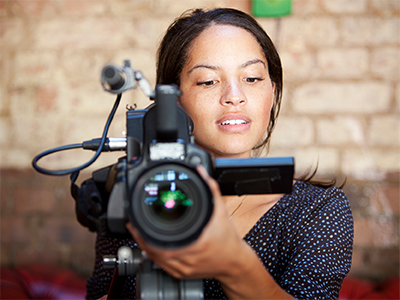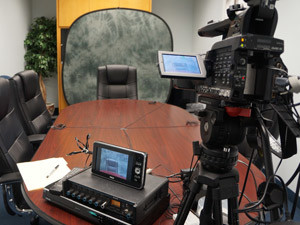Legal Videography: Strengthening Communication Between Lawyers and Clients
Legal Videography: Strengthening Communication Between Lawyers and Clients
Blog Article
Why Lawful Videography Is Important for Accurate Court Recordings
The duty of lawful videography in court room settings can not be overemphasized, as it functions as a necessary tool for maintaining the honesty of court records. By capturing both spoken and non-verbal interaction, it boosts the clearness of witness statements and reflects the subtleties of courtroom interactions. This detailed paperwork not only aids in decreasing possible misconceptions however additionally supports appellate reviews, thereby strengthening the judicial procedure. The effects of incorporating lawful videography into standard courtroom methods raise crucial inquiries concerning its wider influence on the lawful system. What might these implications involve?
Value of Visual Proof
In the world of lawful process, the value of aesthetic evidence can not be overstated. Visual evidence acts as an effective tool in developing realities, supporting testaments, and improving the overall clarity of an instance. This type of proof, that includes photos, videos, and layouts, can offer a tangible context that verbal summaries typically lack, thus using courts and judges a clearer understanding of the scenarios surrounding an instance.
Furthermore, visual evidence aids in the retention of information. Human cognition is inherently visual, and people are most likely to remember and comprehend information offered in a visual layout. In the court room, this can be critical, as compelling visual evidence can guide opinions and strengthen the narrative offered by legal representatives.
In addition, the usage of visual evidence can reduce misunderstandings and uncertainties that frequently arise from verbal exchanges. By supplying a straight depiction of occasions, visual evidence helps to remove subjective analyses and promotes a much more unbiased assessment of the realities. The assimilation of aesthetic evidence right into legal procedures not just enhances the integrity of the judicial process yet also improves the probability of achieving a simply outcome.
Catching Non-Verbal Cues
Using sophisticated videography techniques can considerably enhance the capture of non-verbal cues during legal proceedings. Non-verbal interaction, consisting of faces, body movement, and eye get in touch with, plays an important function in sharing feelings and intentions that might not be explicitly specified in verbal testimony. legal videography. Lawful videography utilizes high-def cameras and critical angles to guarantee that these refined signs are recorded with clearness and precision
The capability to analyze non-verbal behavior can give important context to declarations made throughout court sessions. A witness's reluctance or confidence can be interpreted through their posture or gestures, potentially affecting the court's understanding of trustworthiness. Furthermore, using close-up shots can help concentrate on an audio speaker's expressions, enabling a more nuanced understanding of the statement.
In addition, integrating numerous cam angles can create an extensive view of communications, highlighting dynamics between events included. This complex method not just boosts the accuracy of the court document however also help in protecting the honesty of the judicial procedure - legal videography. Eventually, capturing non-verbal hints with legal videography fosters a richer, more full representation of court procedures

Enhancing Statement Reliability
The integrity of testament can be significantly bolstered through using high-quality lawful videography. Video clip recordings offer as an objective medium that records not just the spoken words of witnesses yet additionally the nuances of their distribution, consisting of tone, pacing, and psychological expressiveness. This diverse documentation offers a more clear understanding of the witness's credibility and intents, which can be pivotal in lawful proceedings.
Additionally, legal videography reduces the possibility for false impressions that might occur from created transcripts alone. When jurors can observe a witness's demeanor and body language along with their statement, they are better equipped to examine the authenticity and reliability of the proof offered. This visual context can enhance the testimonial narrative, making it extra compelling and reputable.
In addition, the presence of a video clip recording can prevent possible variances in statement. Witnesses may be much more mindful in their statements when they recognize they are being recorded, leading to more precise and honest accounts. Generally, high-quality lawful videography enhances the integrity of testimony, making sure that the court has access to a total and sincere representation of the truths as conveyed by the witnesses.
Sustaining Appeals and Reviews
Lawful videography plays an important role in supporting appeals and reviews by offering a comprehensive aesthetic document of court proceedings. This aesthetic paperwork records not only the spoken words of witnesses and attorneys yet likewise the nuances of body language, tone of voice, and court room dynamics. Such aspects can be pivotal in comprehending the context of testaments and debates presented.
In the appellate procedure, where the focus gets on mistakes of regulation and step-by-step fairness, a video clip record can function as an essential device for appellate courts. It makes it possible for courts to evaluate the initial trial context, ensuring that choices are based upon a full understanding of the proceedings. The ability to visually assess the demeanor of witnesses or the interactions in between events can disclose insights that composed transcripts may overlook.

Additionally, legal videography can assist in making clear obscurities pop over here in testaments or procedural rulings, thereby enhancing the basis for a charm. By supplying a trustworthy, objective account of what transpired in court, lawful videography not just supports the honesty of the legal procedure yet Click Here also empowers all parties included to make enlightened choices concerning their situations.
Simplifying Courtroom Procedures
Enhancing courtroom effectiveness, lawful videography improves processes by providing instant access to visual documents of procedures. This modern technology permits judges, lawyers, and juries to revisit crucial testament and evidence, ensuring that all parties have a clear understanding of the situation. By catching the nuances of spoken and non-verbal interaction, videography enriches the document, making it easier to grasp the context and weight of testaments.

Furthermore, video clip recordings can assist in remote involvement in hearings, enabling higher adaptability in organizing and participation, which is specifically useful in complex situations including several stakeholders.
Verdict
To conclude, legal videography plays a vital function in making certain accurate court recordings by giving essential visual proof that captures both verbal and non-verbal interaction. This practice improves the reliability of testaments, supports appellate reviews, and improves courtroom procedures. By cultivating an extensive understanding of court characteristics, legal videography inevitably adds to address much more equitable judicial results, strengthening the stability of the lawful system and helping with educated decision-making.
Report this page